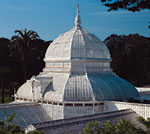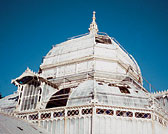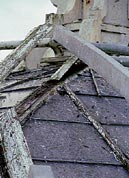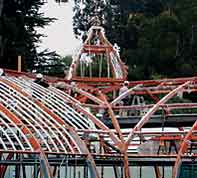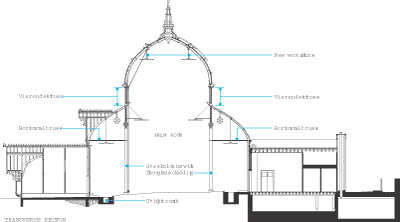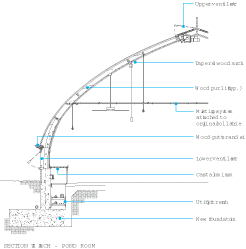Giving Old Buildings a Reason to Live
Conservatory of Flowers
Born from a kit-of-parts of uncertain parentage, its pedigree is highly questionable. Yet, despite such humble origins, San Francisco's Conservatory of Flowers blossomed into a treasured local and national landmark. And, now sparkling after years of benign neglect, the recently rehabilitated pavilion was awarded the California Governor's Historic Preservation Award for 2004 and an AIA 2005 Institute Honor Award. The components for the conservatory were originally purchased by a San Jose businessman who died before it was ever assembled. Still in boxes, the pavilion found its way to San Francisco's Park Commission. In 1878, the City erected the12,000-square-foot greenhouse-which included an entry vestibule, domed central space, east and west wings, and potting room-- in Golden Gate Park. The structure was fabricated primarily from old-growth redwood.
|
The oldest extant building in the park and the oldest public greenhouse in California, the conservatory has had its share of troubles: A fire in the 1883 destroyed the dome, which was subsequently rebuilt. It managed to survive the 1906 earthquake intact, but more recently suffered the indignities of deferred maintenance. Finally, in 1995, unusually strong winds rattled its by-then decrepit structural frame and diaphanous skin. Unable to withstand the forces, its skeleton swayed and twisted, and numerous glass panes popped and shattered. The City had no choice but to close it. Two local firms-- Architectural Resources Group (ARG) and Tennebaum-Manheim Engineers-- worked together to make the necessary repairs.
|
The team determined that, because it was in such poor condition, the hothouse would have to be entirely dissembled and rebuilt from the foundation up. Although this seems somehow fitting to its Tinkertoy-like nature, the designers nonetheless had to proceed with caution because the building had established such strong roots-both literally and figuratively-over the years. The conservatory, for example, was restored in phases to ensure adequate accommodations for its cherished flora specimens. And great effort was made to retain as much of the historic fabric as possible.





